How to upgrade your home using the latest tech
Check out the tech that's designed to upgrade your home
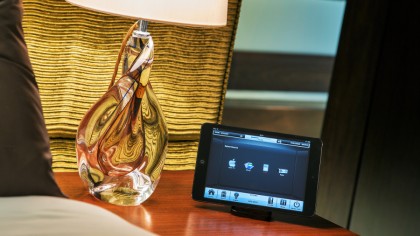
How to upgrade your home using the latest tech
One of the biggest trends at this year's Consumer Electronics Show in January was smart home automation gadgets. Everything from advanced Bluetooth-enabled deadbolts that can be locked and unlocked remotely to smart home security cameras that can recognise family members and connected home appliances that you can control from your smartphone were all on display, proving that the market for affordable, do-it-yourself smart home technology is far from a passing fad.
In fact, a new report from Transparent Market Research said the global home automation market in 2014 was worth US$4.4 billion, with predictions that it would grow at a compound rate of 26.3 percent per annum. With wireless sensors becoming smaller and more affordable, and the reach of the Internet of Things continually expanding, 2015 is likely to see the connected home finally go mainstream.
Here are some of the best smart home gadgets that were unveiled at CES 2015.
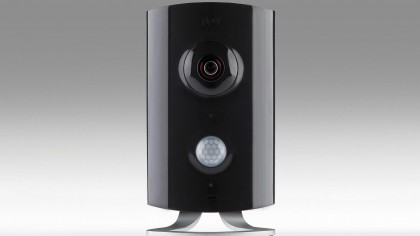
Security
2014 already saw a variety of security cameras hit the market that offered advanced home surveillance functionality at a fraction of the cost of a traditional IP camera system. This year continues the trend, and while we didn't see any revolutionary new products at CES, the devices there were on display offered various enhancements that will make it easier and more seamless to keep an eye on your home remotely.
The Piper NV is an upgrade over last year's popular home security camera, adding a night vision mode that automatically kicks in when it gets dark, a 3.4-megapixel camera (an upgrade over the original model's 2.4-megapixel camera) with the same ultra-wide 180-degree fish eye lens, and a faster processor that enables it to record motion-detected video clips onto the built-in flash memory.
Using the iOS/Android app, you can activate and disable the security monitoring, set custom alerts, and watch a live video feed.
The built-in stand means you don't have to bother with any complicated installation, while the additional features like the two-way audio feed, environmental sensors (including temperature, humidity and light) and home automation functionality (letting you plug in other smart home devices like locks, plugs and thermostats) make it more of a smart home hub than a standalone security camera.
The Chamberlain Notifi takes a slightly different tack. Designed to monitor the goings-on at your front door, it consists of an LED light bulb and a video camera that automatically sends an alert to your smartphone when it detects motion. The clever thing about the Chamberlain Notifi is that it provides power for the video camera from the light socket, so you don't have any unsightly wires trailing through the door or have to worry about getting it professionally installed or replacing the batteries every six months.
By default, the Notifi sends a picture to your smartphone when someone's on your front porch, but you can request video by tapping a button in the smartphone app.
Maker of the popular Urban Weather Station and Thermostat, Netatmo announced a new smart camera at CES that's mainly designed around keeping tabs on your family members. Advanced face recognition technology lets it monitor the comings and goings of your household, making it easy to check through the app whose home at any given time.
It also gives you heads up if it registers any unknowns lurking around your house, and it's clever enough to distinguish between humans and pets. The iOS/Android app lets you stream a live video feed remotely, and using the IFTTT (If This, Then That) online service, you can create rules based around certain triggers, ie switching on the lights when the kids come home.
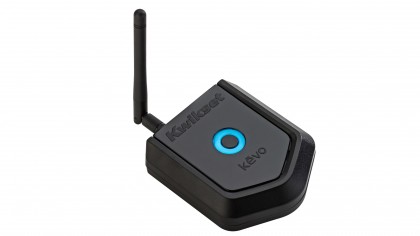
Bluetooth door locks
With much of the innovation around smart locks seeming to peak last year, this year's Consumer Electronics Show didn't show anything dramatically different in this category. Still, owners of the existing Kwikset Kevo and August smart locks will be pleased to learn that their early investments into the technology haven't been superseded yet.
Kwikset unveiled the Kevo Plus router hub that works with the existing Kevo to add remote locking and unlocking capabilities via the app, along with unlimited eKeys and remote monitoring. The bad news is that you'll have to shell out for a premium subscription to add these capabilities – although the hub is free if you sign up for a year of service.
August, maker of the popular HomeKit-compatible Smart Lock, also announced a similar hub called the August Connect. This adds Wi-Fi capabilities to its already-impressive roster of features, letting you lock and unlock the door remotely.
August also announced greater compatibility for its smart lock, adding SmartThings, Logitech's Harmony Home Control, and Nest Thermostat support. Unlike the Kwikset Kevo Plus, there are no ongoing fees to use the August Connect, making it much more appealing as an add-on.
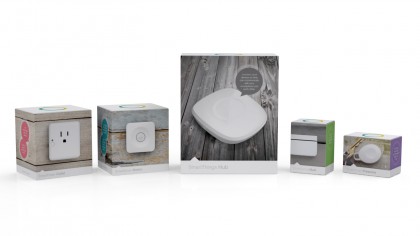
Smart home ecosystems
While the market for individual smart home devices is mainly dominated by plucky startups that are looking to make a name for themselves, the ecosystems that tie all of these gadgets together are where you'll see the bigger names in consumer electronics.
Samsung, which acquired the popular SmartThings platform last year in its bid to take on the likes of Google and Microsoft, unveiled a new version of the SmartThings hub and smaller sensors for tracking things like motion, temperature and light.
The new hub looks more or less like the old one, but it adds Bluetooth 4.0 support, a faster processor, battery and cellular backup options so it can continue running in the case of power failure.
It also adds support for more products like the Honeywell Thermostat, Philips Hue and Netgear, along with support for Samsung's existing smart appliances, giving its users broader control over a home's consumer electronics and appliances. At CES, Samsung announced that 90 percent of its devices would be Internet-enabled by 2017, and the full 100 percent by 2020.
D-Link, best known for its wireless networking products like the DIR-505 portable router, threw its hat into the smart home ring by launching the Connected Home Hub platform. With support for both Z-Wave and Wi-Fi (but not Zigbee or Bluetooth), it's compatible with a range of existing smart home devices, and D-Link will be launching its own selection of sensors that can be used for creating various custom rules.
Elgato is a brand that Apple enthusiasts would be familiar with for its range of iPhone, iPad and Mac accessories such as the Elgato Thunderbolt Dock. The company showed off its Eve platform at CES that consists of a range of Bluetooth LE-based sensors that test in-home variables such as air quality, temperature and energy consumption to ensure the security of your home.
Importantly, Elgato Eve is compatible with HomeKit, which means you'll be able to ask Siri questions like whether your bedroom window is open or to turn the fan on in the living room.
Belkin's WeMo platform – one of the earliest DIY smart home ecosystems – got a shot in the arm with the launch of an extended range of home sensors that complement its existing lineup. The new sensors include a personal keychain sensor that's designed to keep track of family members and pets, a door and windows sensor that detects an open and closed state on any window or door –even for things like a refrigerators and safes, and a room motion sensor that uses infrared to detect heat signatures.
Through the WeMo smartphone app, you can set up a variety of custom rules that use one or more WeMo devices as triggers, such as sending you a notification if anyone opens the refrigerator, or automatically turning on a WeMo light bulb if it detects motion in the room between certain hours.
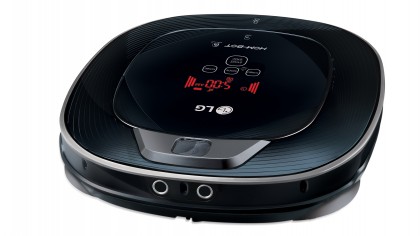
Appliances
In the early days of connected appliances, we saw a lot of white goods with Internet connections and touchscreens that were added on for a premium price without adding any real value to the product. The latest crop of devices, however, are a little smarter about integrating with the 'Internet of Things'.
LG's latest Hom-Bot robot vacuum cleaner, for instance, is a great example. Using the two front-facing cameras – which were originally designed for tracking dust levels on the floor – it can function as a roving home security camera, sending photos of any movement that it detects to your smartphone. If you spot anything suspicious, or simply want to give the cat a good scare, you can remotely control the Hom-Bot's movement throughout your house using the app.
Another interesting appliance LG launched at CES was the TwinWash washing machine. The 'connected' functionality, which notifies you when a load is done and lets you start a wash remotely, isn't anything we haven't seen before, but its ability to do two loads simultaneously will be a boon for busy households.
The TwinWash is essentially a washing machine within a washing machine, with standard front loading door for your main load and a separate pull-out door to wash a second load simultaneously. This means you won't have to bother with washing darks, whites, and delicates at separate times.
The options for retrofitting existing home gadgets and appliances with smart technology continue to grow, and more and more of them offering HomeKit support to let you control them via Siri voice commands.
The iDevices Switch smart power plug and iHome Smart Plug both work as an intermediary between the power outlet and your device, adding Wi-Fi support to the mix so you can control the device (mainly by turning it on and off, or setting it on a timer) from an app no matter where you are.
Since both of these smart plugs support Apple's HomeKit platform, you can set them up to be part of a broader scenario that incorporates multiple smart home gadgets. Saying 'I'm home' to Siri, for instance, could trigger your house lights, air conditioning, and specific devices that are connected to compatible smart plugs such as lamps and electric fans.
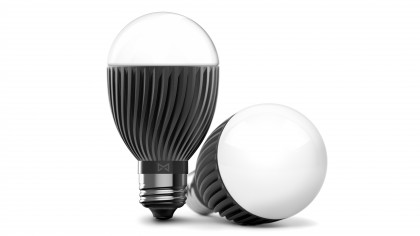
Miscellaneous gadgets
While most of the attention for smart home technology is focused on practical, everyday devices, there's still plenty of room for the unexpected. For well-heeled parents that are worried about their kids' sleep quality, Sleep Number has the US$1000 SleepIQ Kids Bed, a mattress stuffed with an impressive amount of gadgetry.
The mattress automatically changes based on the child's body, optimising the support for comfort and spinal alignment. It also monitors the child's breathing, heart rate and movement to calculate a score that parents can check in the smartphone app to see how well they're sleeping. Other features include an instant notification if your kid gets out of bed in the middle of the night and an attached night light that you can turn on and off remotely.
There are plenty of Wi-Fi-controlled light bulbs on the market already, but if you want one that you can remotely control from your fitness tracker, look no further than the Misfit Bolt.
The LED light bulb is rated at 800 lumens, which is brighter than the popular Philips Hue bulb, and it doesn't require a hub, which makes it a cheaper lighting system to invest in compared to most other connected bulbs. It also uses Bluetooth to connect to a smartphone rather than Wi-Fi, so you won't even need a wireless network to get it up and running.
Priced at US$50, it's a lot more affordable than its competitors, but the coolest thing about the Misfit Bolt is its integration with the company's line of activity trackers. Using something like the Misfit Shine, you can turn the lights on and off without having to fiddle with the smartphone app, and you can even get it to tune into your sleep cycles and have it display a simulated sunrise when it's time for you to get up.
If you like the idea of having plants but don't have much luck keeping them alive, the Parrot Pot is your ideal smart home gadget. This Bluetooth-connected flowerpot has a built-in reservoir of water and soil that will automatically keep your plants in good condition for at least three weeks, taking into account factors like ambient light, temperature and soil moisture.